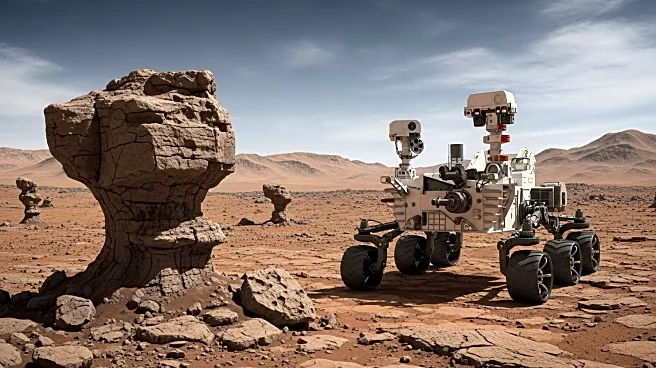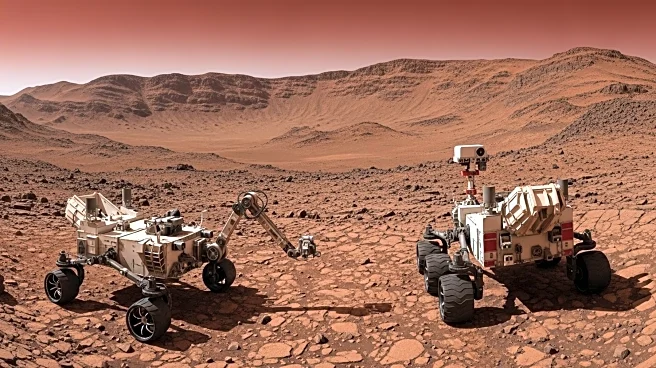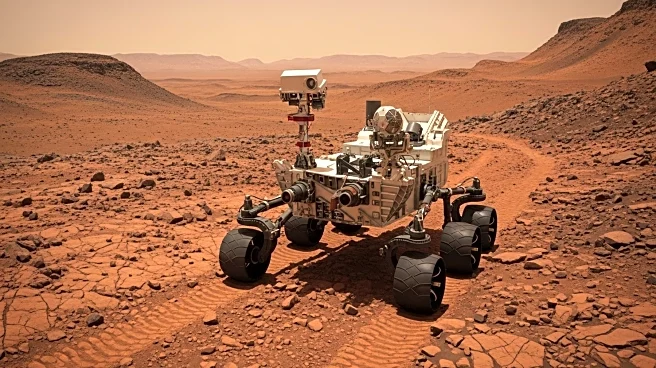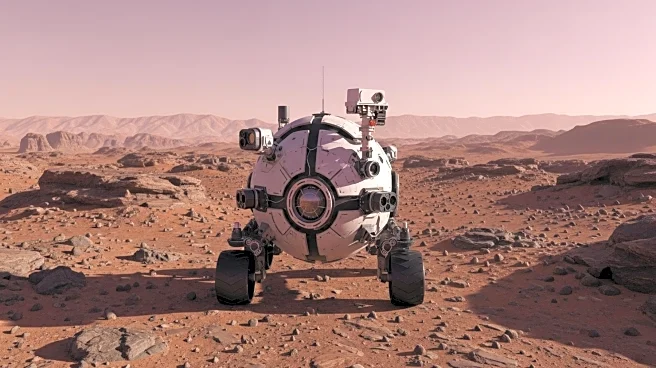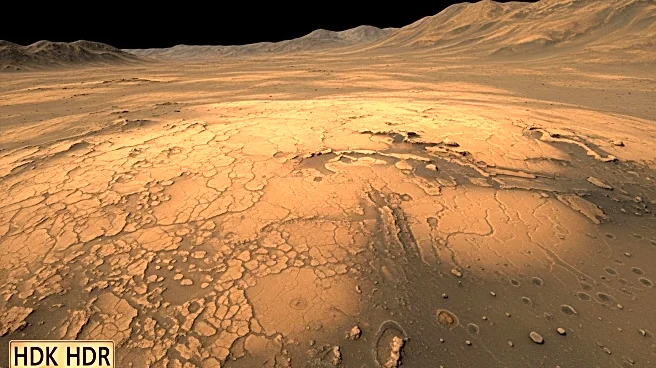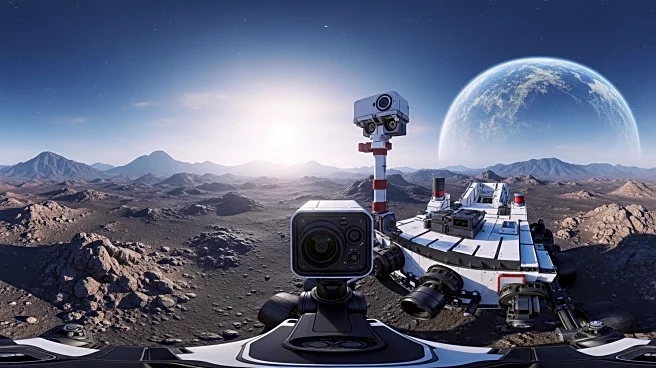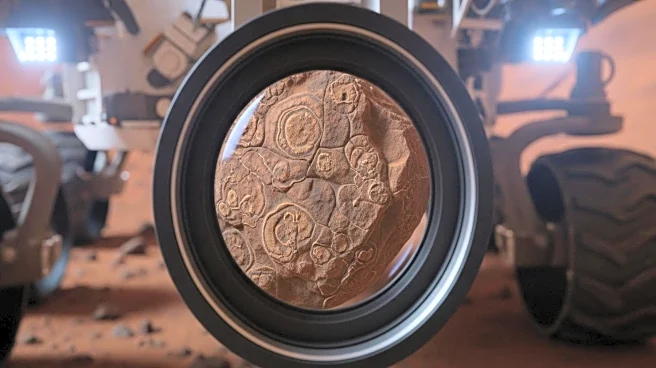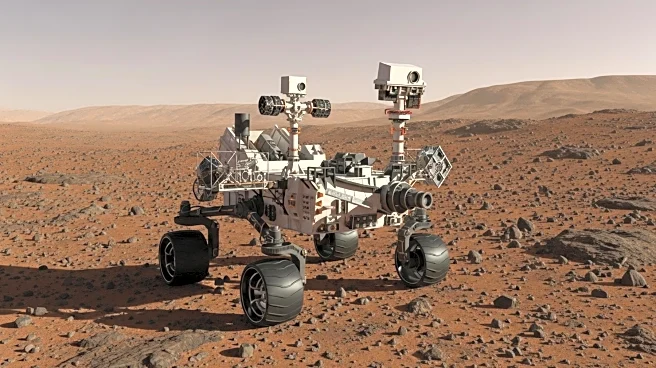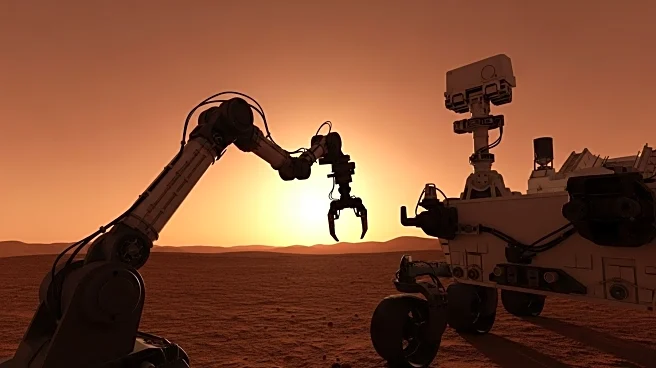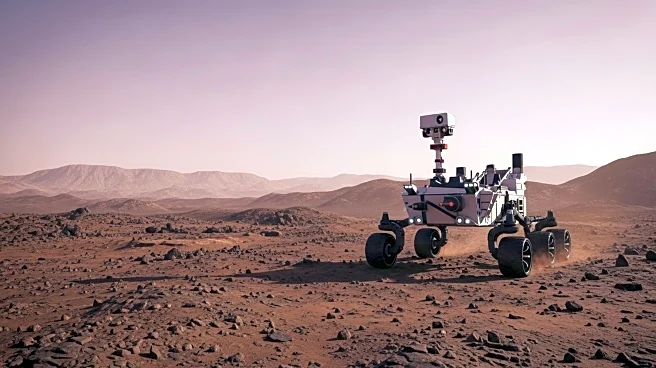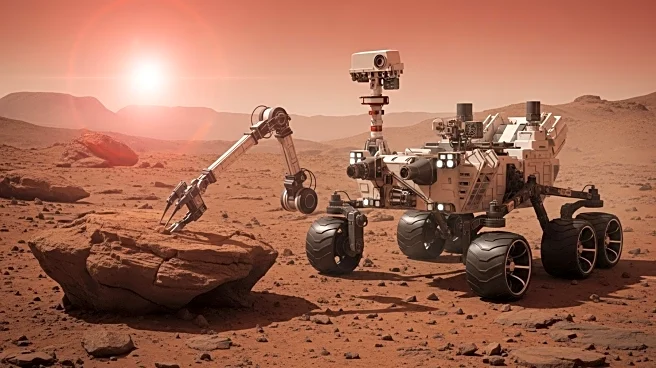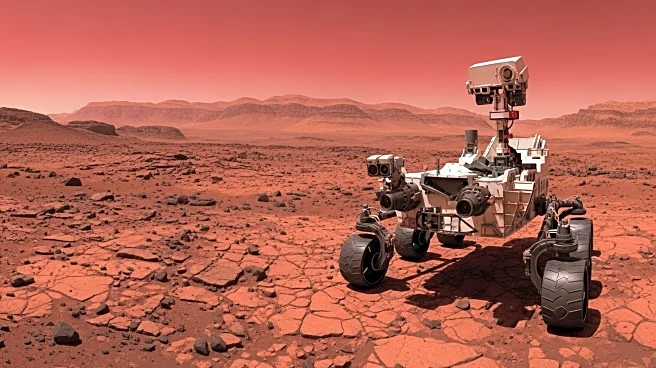What is the story about?
What's Happening?
NASA's Curiosity rover is conducting a detailed investigation of unique rock formations on Mars, specifically in the boxwork terrain of Mount Sharp. The rover is analyzing pronounced ridges and hollows, hypothesized to be formed by cementation from circulating fluids followed by erosion. Curiosity is documenting textures, structures, and compositions to understand the differences between ridges and hollows. Recent activities include analyzing smoother bedrock and nodular bedrock, with plans to drill into one of the ridges. The rover is also capturing long-distance images of other geological features and monitoring environmental conditions such as dust and clouds.
Why It's Important?
Curiosity's exploration of Mars provides critical insights into the planet's geological history and potential for past life. Understanding the formation of these rock structures can reveal information about Mars' climate and environmental conditions over time. The data collected by Curiosity contributes to the broader scientific knowledge necessary for future human exploration of Mars. Additionally, these findings may inform the search for biosignatures, aiding in the quest to determine if life ever existed on Mars. The mission supports NASA's long-term goals of Mars exploration and the eventual human settlement of the planet.
What's Next?
Curiosity will continue its investigation of the boxwork terrain, with plans to drill into one of the ridges to gather more data. The rover will also proceed with its environmental monitoring activities and capture additional images of distant geological features. The findings from these analyses will be used to refine hypotheses about Mars' geological processes and history. NASA will use the data to plan future missions, including those involving human exploration. The ongoing research may also lead to new discoveries about Mars' potential habitability and its suitability for future colonization.
AI Generated Content
Do you find this article useful?
